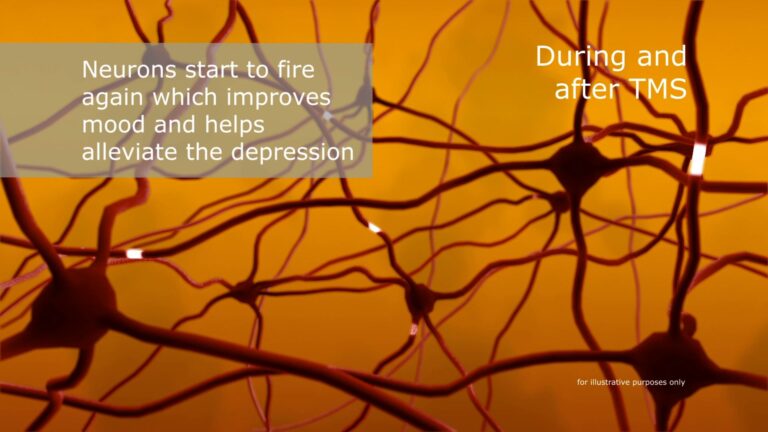
FAQs
How does the TMS Therapy System Work?

During the treatment, the patient is seated in a reclined position in a comfortable treatment chair with the head supported in a relaxed position. In the treatment of depression, the coil part of the TMS system will be positioned on the left front side of the head, over the part of the brain called the Left Dorsolateral Prefrontal Cortex (DLPFC). In the treatment of OCD, the coil is placed over the Dorsal Medial Prefrontal Cortex (DMPFC). Short bursts of electricity are passed through the treatment coil, which in turn generate magnetic fields. The magnetic fields have the ability to pass unhindered through the scalp and create small electric currents in the targeted area of the brain. These electric currents depolarize or activate nerve cells in the region of stimulation. Clinical studies have demonstrated that this repetitive magnetic stimulation is safe and effective in treating patients with depression and OCD.
TMS Therapy:
- FDA cleared for the treatment of Major Depressive Disorder and OCD
- Safe and effective
- Offered only by licensed physicians
- Covered by most primary insurance carriers
- Free from common medication side effects
- Does not require anesthetics
- Allows the patient to resume daily activities immediately
- Allows for treatment with or without medication (determined by a physician
When Should TMS Therapy Not be Used?
The TMS Therapy System creates a magnetic field that could cause metal objects near the stimulation coil to move or get hot. Patients with non–removable magnetic-sensitive metals or metallic devices implanted in their head or in body parts near the stimulation coil should not receive therapy with the TMS.
NOTE: Standard amalgam dental fillings are not affected by the magnetic field and
are acceptable in patients.
